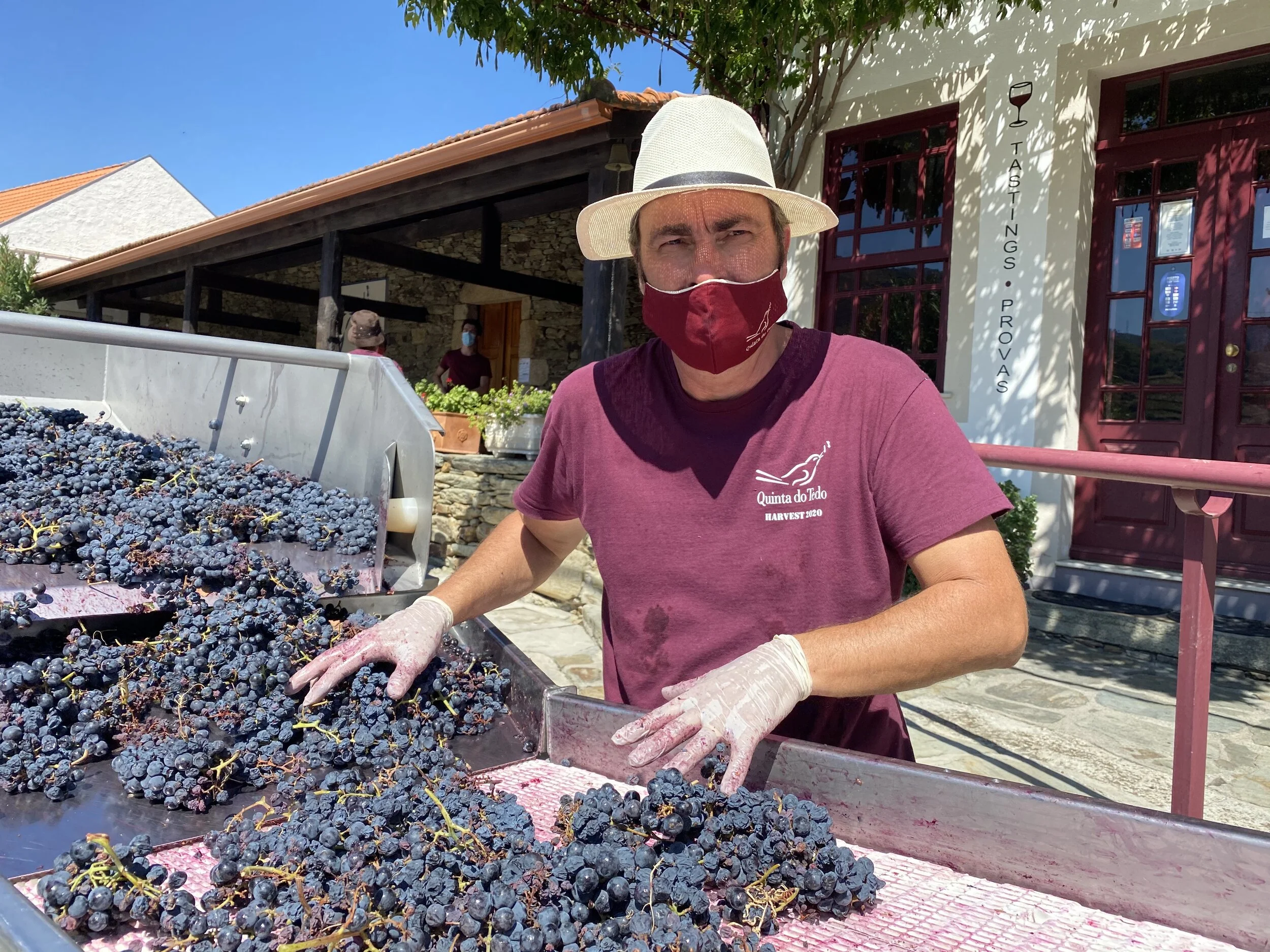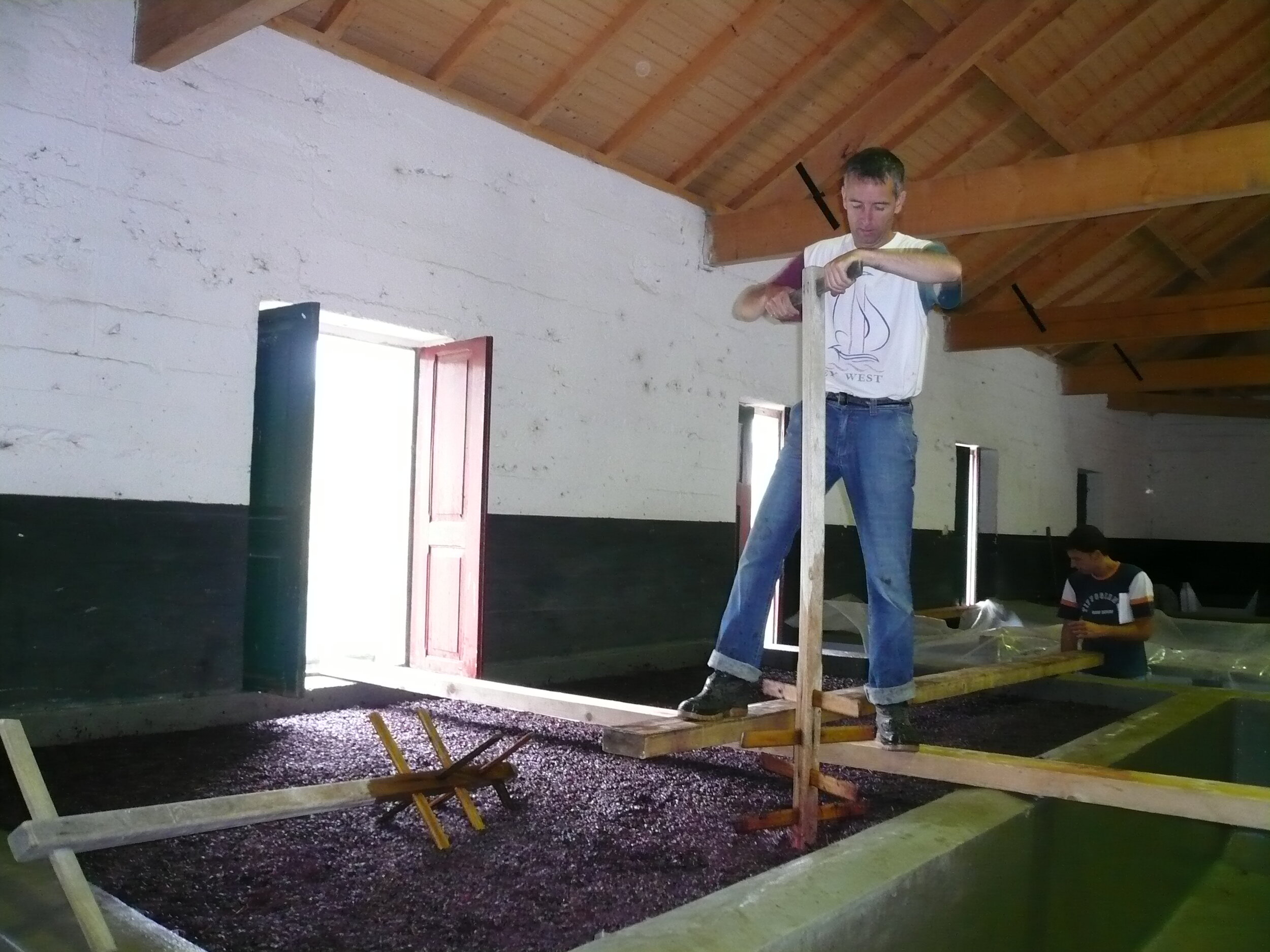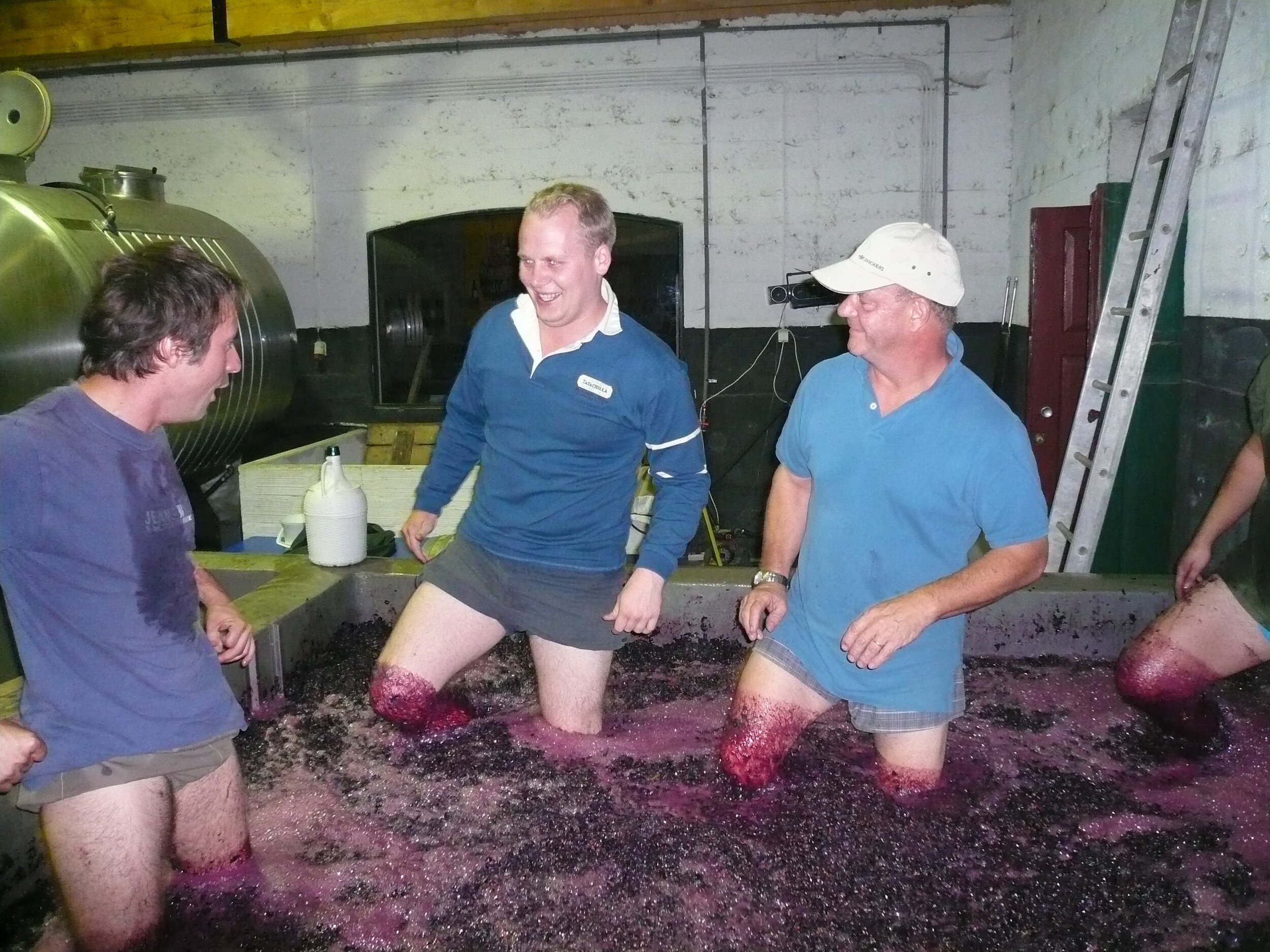Fall colors painting Douro Valley red, orange, yellow and green. Photo by Kay Bouchard.
As our vines lose their leaves, our team re-energizes, and 2020’s wines rest in the cellar, the electric energy that builds up each year over the summer, and peaks during harvest, steadies to a peaceful lull.
Although two months remain until the end of the year in our calendars, the end of harvest marks the end of the growing year in the vineyards us “winoes”, like many others, depend on to sustain our livelihood and passion. These next two months are a time to reflect on the accomplishment of another unique harvest.
This year’s weather cycle was uncommon in Douro Valley, and COVID19 introduced harvest-time novelties and challenges in wine regions all over the world.
Average winter temperatures and rainfall paved the way for, what seemed would be, a normal growth cycle in the vineyards, that is until February temperatures peaked higher than usual, bringing the vines out of their slumber earlier. July brought on the highest average temperatures ever recorded for that month in Douro Valley. Thankfully, over 300+ years, this region’s 120+ indigenous grape varieties have developed strategies to cope with extreme heat and drought, for example, by reducing the number and size of berries and slowing down maturation.
At Tedo, we harvest earlier than other estates to maintain freshness and reduced sugar and alcohol levels in our Port and Douro DOC wines. However, the 2020 harvest started even earlier than usual, at the beginning of September, right after a quick rain shower juiced up some dehydrated berries (not an uncommon occurrence in great Vintage Port wine years). While the yields were about 35% less than usual, the quality of grapes was wonderful, especially for the production of age-worthy Port wines that showcase a concentrated array of flavors, colors, and that iconic “Tedo Character” we all know and love.
A peak through the changing colors of hilltop vines overlooking our estate. Photo by Odile Bouchard.
As I write about the “Tedo Character” of our Port and Douro DOC wines, let’s talk about the unique terroir it emerges from.
Some of our 18 hectares of organic, grade A (similar to Burgundy’s Grand Cru classification) vineyards grow along the river, where it is warmer and more humid. Some grow nestled between valleys, where they are more protected from the elements. Some grow at 150-meter elevation, where they are more exposed to the warming sun, drying winds, and colder nighttime temperatures. Some 65+-year-old vineyards are field blends of 24+ varieties that are harvested and vinified together. Some are younger, monovarietal plots that we strategically grow in hotter, dryer schistous soils, or cooler, damper granitic soils, harvest earlier or later, and vinify with longer or shorter maceration times, all according to our philosophy of how each varietal expresses best.
Map of the hiking trail that meanders along the Tedo River, through our vineyards and olive orchards, along with explanations of some indigenous grape varieties and where to find them throughout our 18 ha of organic, grade A vineyards. Photo by Kay Bouchard.
The unique and familiar “Tedo Character” present in our Port and Douro DOC wines has as much to do with the grapes and where they grow, as it does with the experienced and creative hand of our viticulture and winemaking team, led by Jorge Alves. Each year, we play up or down the unique expression of individual vineyards by deciding when to harvest, how to vinify, and what to blend.
Instead of foot-treading this year (which usually involves linked arms and a couple shared glasses of Port wine), our team, masked and following owner Vincent Bouchard’s “um, dos, um, dos, um, dos!” cadence, used traditional macacos (long, forked poles made of chestnut wood) to punch down the hard cap that forms in the lagares from the grapes’ skins and seeds floating up with carbon dioxide produced from the fermenting juice beneath. While macacos are generally used to occasionally soak the cap, we found that plunging and twisting them into the fermenting lagares repeatedly for up to an hour at a time could extract the same, if not more, flavor and color from the grapes than foot-treading. We have yet to taste the results!
Harvest’s over and so are the days of our winemaking team’s wet, cellar feet! Photo by Vera Matias.
Besides reactionary innovation to overcome certain challenges this year, we are proud to announce some exciting, proactive innovation at Tedo - a rosé Douro DOC wine!
Owner, Vincent Bouchard, and daughter, Odile Bouchard, tasting the evolution of our new Douro DOC rosé wine, partially fermented and aged in this cocciopesto vase. Photo by Odile Bouchard.
We specialize in red Port and Douro DOC wines as we do not grow white grapes (our grade A location is reputable for producing the highest quality red grapes for the production of red Port wines), nor do we buy white grapes (our valuable “single Quinta” classification means we only harvest our own estate grapes and do not source grapes externally). Working with what’s on hand, we introduced a lighter, fresher, younger rosé Port wine in 2010 with great success, and, in 2021, will bring you a rosé Douro DOC wine to complement our three, red Douro DOC wines.
Look forward to an elegant marriage of three iconic Douro Valley grape varieties - Touriga Nacional, Touriga Franca, and Tinta Barroca - from 20+-year-old estate vines, fermented and aged partially in stainless steel (to preserve the freshness and pure character of each variety), and partially in cocciopesto (a large vase made of ancient, clay-like material used in Roman times to build aqueducts and baths, with tiny pores that allow for microoxygenation and impart a sense of minerality to our rosé).
Of a pale blush color, this rosé is (thus far) beautifully aromatic, crisp, and juicy. We cannot wait to see how it evolves over the next few months, and to share it with you in 2021!
Finally, we’d like to impart a fun, fall-themed fact we are sure will deepen your appreciation of Douro Valley’s (and wine regions’ around the world) changing summer-to-fall color palettes…
50 shades of red in our vineyards around this time of year. Photo by Odile Bouchard.
Did you know red grapevines’ leaves turn red in fall, while white grapevines’ leaves turn orange or yellow?
Let’s backtrack a bit - with less sunlight and shorter days in fall, the chlorophyll that colors grapevines’ leaves green in spring and summer and produce sugar for them to grow, break down. The sugar migrates to the vines’ roots, where it is stored until spring when the vines come out of dormancy and use it to grow new leaves. In the absence of green chlorophyll, other colorful components come into play.
Orange and yellow carotenoids are produced in all grapevines and are the first to show through in white grapevines’ leaves. Red anthocyanins are only produced in red grapevines in late summer and are the first to show through in their leaves, before breaking down to let the orange and yellow carotenoids show through. The vibrant diversity of hues in a vineyards’ fall foliage also depends on other factors, such as soil pH (more acidic soils yield brighter red leaf colors), vine age (older vines tend to express more intense colors), and grape variety (Tinta Roriz, also known as Tempranillo in Spain, is one of the first vines to change colors).
That mosaicked landscape of fading greens, striking reds, golden yellows, and wavering oranges surely warrants a warm slice of apple pie and a glass of Quinta do Tedo Tawny Port, which we take comfort in knowing we will be virtually sipping in similitude, saudé !
Tour Guide Extraordinaire, Catarina Rei, with Tedo friends from Côte d'Ivoire on their honeymoon in Douro! Photo by Kay Bouchard.
written by Odile Bouchard

























